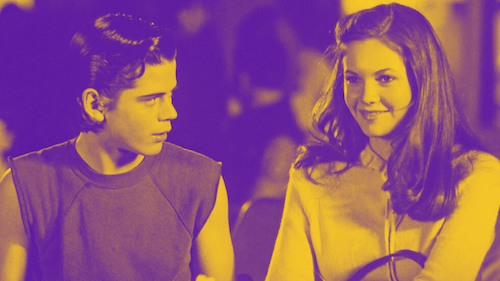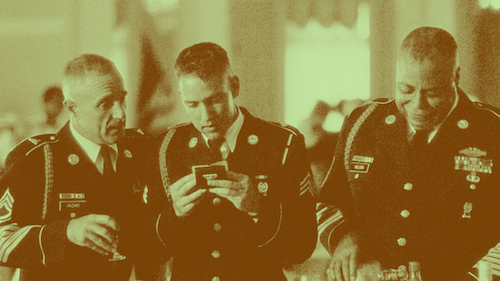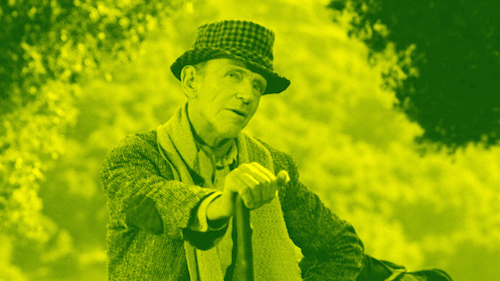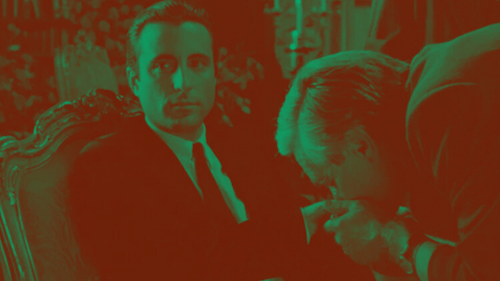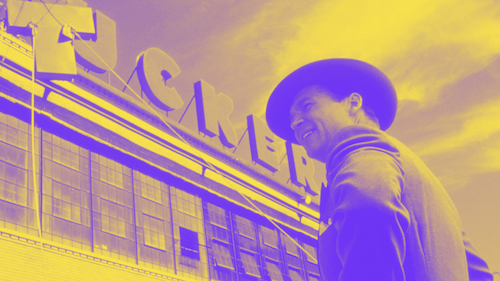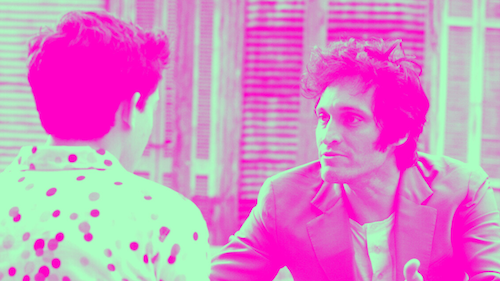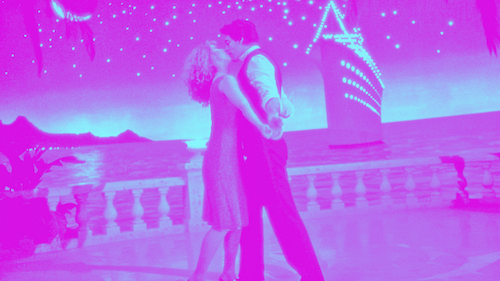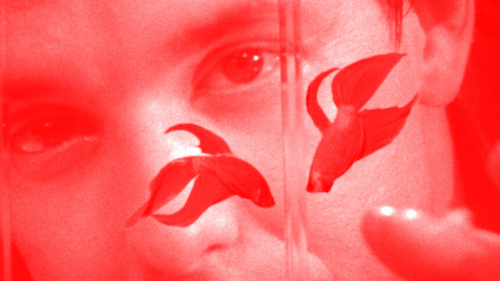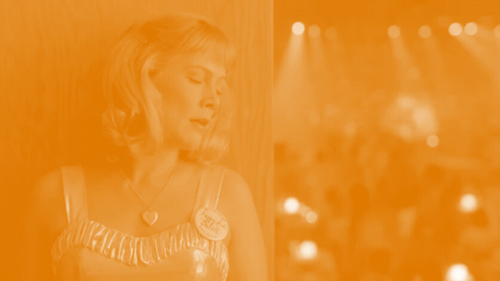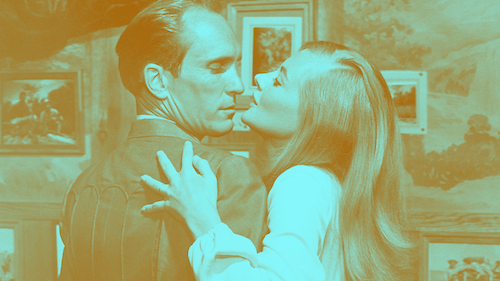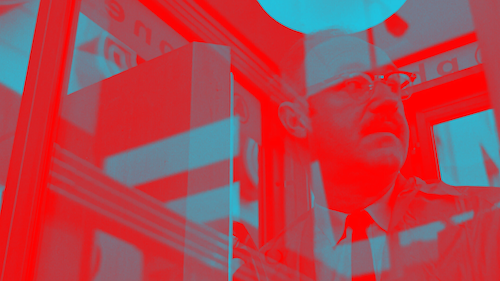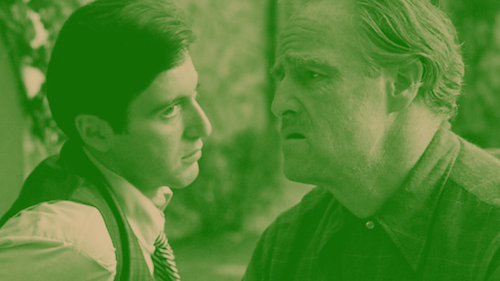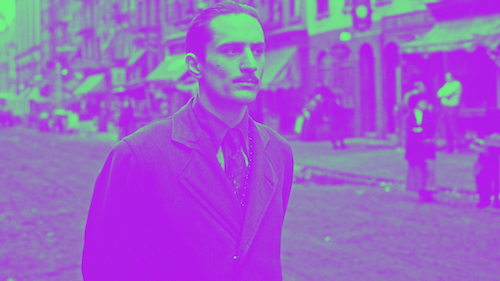Filmography Worship: Ranking Every Francis Ford Coppola Film
Written by Andreas Babiolakis
Filmography Worship is a series where we review every single feature of filmmakers that have made our Wall of Directors
Do I even need to introduce the New Hollywood, American auteur icon, Francis Ford Coppola? I think anyone who has ever come across a single motion picture will eventually come to learn who the famous filmmaker is in at least some capacity. He has been adored since the early seventies, and his half century reign in the film industry continues (whether the industry approves of this or not, considering how obviously it wants him to now fail and flounder because he continues to play by his own rules). Whether you are a big fan of Coppola or not, you cannot deny that he will do whatever it takes for his films to come to fruition via blood, sweat, tears, and the major sacrifices he has made time and time again (to the point of becoming personally bankrupt once spending too much of his own money). He leaves it all out on the big screen, and you can see that with either messy attempts or untouchable results that will be imitated and mimicked for eras.
One of the many students who worked under the supervision of New Hollywood mogul Roger Corman, Coppola got an early start in his filmmaking career, directing his feature length debut, Dementia 13, back when he was twenty four in 1963. After three more projects (the biggest being the lavish musical Finian’s Rainbow in 1968, which somehow secured Fred Astaire and Petula Clark), Coppola’s name was officially on the map. No, not because of The Godfather in 1972; not quite just yet. You see, Coppola isn’t just a beloved director: he is cherished for the projects he produces, and for his screenwriting capabilities as well. The latter proved to be his big breakthrough when he won an Academy Award for co-writing the war epic Patton (1970) with Edmund H. North (Coppola’s greatest triumph within this film is easily the magnificent opening monologue, served to lead actor George C. Scott on a silver platter; Scott refused to work with any script other than Coppola’s after producers insisted on revisions).
After Patton, Coppola had the film world in the palm of his hand. If music aficionados love to bring up the great four-album runs (specifically in relation to The Rolling Stones’ stretch from Beggar’s Banquet to Exile on Main Street), then Coppola has a great cause for having one of the strongest cinematic equivalents throughout the seventies, from The Godfather, 1974 having two heavy hitters (The Conversation and The Godfather Part II), and 1979’s Apocalypse Now. These were the only films he released in that decade, but you can still claim that Coppola dominated the seventies with perfection and be right. However, with Apocalypse Now came a set of problems. A director who was now in complete control was losing sight of what control meant, with a project that was so ambitious that it was even being considered insane upon its release; the harrowing production of what was then the biggest budgeted film of cinematic history was captured in the documentary Hearts of Darkness: A Filmmaker’s Apocalypse, with much of the content captured by Coppola’s wife, Eleanor Coppola (who sadly passed away in 2024, before the release of the long-gestated project Megalopolis, which is dedicated to her).
Between the financial struggles of Apocalypse Now and the box office bombing of the followup film, the escapist dreamworld musical One From the Heart (1982), Coppola was resorted back to square one. He had nothing left. He dedicated the next phase of his career towards projects that would hopefully help him regain his money and control, from traditional, Hollywood-friendly releases, to the occasional risk that would speak to his adoring fans (think Rumble Fish). Once he played ball for long enough — he considers The Rainmaker (1997) to be the last traditional film he ever made — he began pushing himself artistically, for better or for worse. These include films that are as unhinged as Coppola has ever been, if not more: artistic experiments that would hopefully change what cinema could be, much in the way that he changed the rulebook back in the seventies. He would find himself selling properties again to self-finance his decades-long passion project, Megalopolis, which finally got released in 2024; the film is a reminder that the director only ever marched to the beat of his own drum.
Alongside his filmography (be these films he directed, wrote, or produced) is a family legacy that will forever be felt, from obvious icons like actors Nicolas Cage (Coppola’s nephew, born Nicolas Kim Coppola) and Jason Schwartzman (the son of Talia Shire, who is Coppola’s sister whom he frequently cast in his films), to lesser known filmmakers and stars (like sons Gian-Carlo and Roman Coppola). Of the many Coppolas who had careers thanks to the big FCC, the most significant — to me — is daughter Sofia Coppola, who went on to become one of the greatest filmmakers of her generation (and of all time). Whether you look at his own projects or the spread of influence and entertainment from his extended family, Coppola’s connection to film is unparalleled.
That isn’t to say that everything Coppola made was good. Far from it. This is a director whose highs are very high and lows are astonishingly bad. Hell, it’s unusual for a master of film to be so capable of mediocrity as well, but Coppola has some middle ground mundanity to scrutinize as well. Nonetheless, I’d argue that in the vast majority of his films, there are redeeming factors or elements that make you realize what the director was trying to achieve with any particular project, even if the hypothesis didn’t work out in the way Coppola intended. When Coppola’s visions translated perfectly to the big screen, we’re left with some of the strongest films ever released, making his risky decisions feel all the more worthwhile. It’s time to dive into all of these works, from the atrocious to the magnificent. Here are all of the feature films of Francis Ford Coppola ranked from worst to best.
23. Jack
Some auteurs have made great family films; Martin Scorsese’s Hugo; Danny Boyle’s Millions; Alfonso Cuarón’s A Little Princess. Coppola’s Jack is not one of those examples. This awkward, abysmal, unfunny, irritating film about a young boy who physically ages faster than normal was stupid when it first came out, and I’d argue that it only ages worse with time (thanks to some of the dated aesthetics Coppola implemented). Star Robin Williams (yes, he plays a child) tries his best with the material given to him, but Jack is so dumb and annoying that it upsets me even thinking about it. How can the director behind so many classics (to be touched upon towards the top of this list) even be capable of a film this bad? It isn’t just that the end result sucks: it’s that Jack was destined to be a terrible film even on paper. Somehow, Coppola still defends this film as misunderstood, but I cannot fathom how.
22. Twixt
Close behind to Jack is another extreme failure of an experiment, Coppola’s horror effort Twixt which feels like a whimpering fart of a story that barely matters. Toss on some occasionally stunning aesthetics that evoke the grimness of Victorian-era gothic imagery, and you’ve got a feature that is now barely interesting. Otherwise, I understand Coppola’s attempt to have a commentary one’s personal fears versus how horror is depicted via storytelling, but the execution here just isn’t it. Twixt is so uninteresting that my brain felt a preview of what it feels like to be cryogenically frozen for five hundred years. The ending of the film gives up with a half-baked, lousy conclusion, which only gives me the impression that Twixt bored itself to death. Twixt? More like “Next.”
21. The Outsiders
I’m going to bother many readers, but I have to be true to myself. I think The Outsiders is a bland misfire of an adaptation of S. E. Hinton’s young adult novel. Hinton’s story helps us find the dysfunctional-yet-loving family dynamic within juvenile gangs, with the necessary depth and history to help us understand the drive behind revenge and brutality. Coppola’s film just glosses over everything. It is a romanticized depiction that loses much of the context found in the original novel (that feels crucial). Having said that, The Outsiders is a noble enough attempt by Coppola, and you can find the biggest of his successes in the majority of the actors (it’s no surprise why the bulk of the main cast went on to have major careers after this film). Otherwise, this film is a chore and a dud that misses the mark. Sorry.
20. Gardens of Stone
One of the least discussed films in Coppola’s career is Gardens of Stone, and it’s for good reason: it is Coppola’s most boring film. While The Outsiders feels flawed even outside of its dull tone, Gardens of Stone is more complete but somehow even more mind-numbing in its execution. Perhaps meant to be a sister film to Apocalypse Now, seeing as this is a war film that doesn’t plant you in the thick of the action (but the focus is rather on those at home or involved with fighters during wartime), I cannot help but feel like Coppola was behaving in the opposite way with how he shot the previous film: he was far too safe with Gardens of Stone. It’s a rare moment where a Coppola film appears to be playing by Hollywood’s rules, and the end result is a forgettable, dry film.
19. Youth Without Youth
The first film Coppola made once he “retired” after The Rainmaker, Youth Without Youth was meant to be one of the first experiments to see what he could accomplish with making a motion picture in the twenty first century. The good news is that Youth Without Youth is a gorgeous film aesthetically, with many great shots that feel surreal or at least like daydreams. The bad news is, like Gardens of Stone, Youth Without Youth is an absolute chore to watch. At least it’s got enough style, artistry, and imagination to help push the film along, because the story and narrative tone on their own are so uninspired. Coppola’s claims about this film and his intentions are clearly evident, because Youth Without Youth feels like a portfolio of concepts rather than a cohesive motion picture.
18. Dementia 13
I actually like Dementia 13, Coppola’s debut feature film, quite a lot. Here is a new director trying a series of ideas to prove his place within the industry, and yet he also isn’t exactly playing ball, either. Dementia 13 is full of interesting shots, effects, and concepts within the psychological horror. I like this film more than at least a couple of the features that have ranked higher. So, why did I place Dementia 13 so low then? I have to admit how dated and limited it is, which does get in the way of what the film was capable of. Still, if you are a major Coppola fan, or even a cinephile who wants to know what a strong debut project looks like (particularly one with a teensy budget), Dementia 13 is worth watching.
17. Finian’s Rainbow
This is a strange one. We’re reaching the territory of Coppola’s career where not every part of a film works, but some sequences do. Finian’s Rainbow is an adaptation of the musical of the same name, and Coppola’s efforts — his most expensive at that point so early in his career — are noble. He got Fred Astaire to lead the film despite the actor not having starred in a traditional musical for over ten years previous to this film; Astaire was 69 here. The real star is singer Petula Clark who steals the entire film not just through her singing, but her strong acting to boot (I wish we had more performances from her). Finian’s Rainbow is fun and colourful but also too long; focused but also all over the place; well-intentioned but problematic (for instance, the use of blackface here is to turn a racist white man into an African American via magic, but that doesn’t justify the effect). It’s interesting to see what a young Coppola’s ambitions look like, mind you.
16. Megalopolis
Then came the ambitions of a Coppola in his twilight years, and Megalopolis is as hit-or-miss as Finian’s Rainbow, if not more. What gives Megalopolis a slight edge is that its strengths are unlike anything I’ve seen in a film before (whereas Finian’s Rainbow’s best moments are as traditional as Hollywood musicals got). There are times during this epic, satirical commentary on the state of America that I was blown away and unable to describe what I had seen. Moments later, I’d be similarly speechless, but because of how ridiculous some of Coppola’s decisions were. Nonetheless, there are very few films that feel as free of studio meddling than Megalopolis, for better or for worse. If I could extract the moments that do work and make a little clip show, I think we’d have a capsule of some of the best moments in Coppola’s career; the rest can be burned for all I care. Uncharacteristically for Films Fatale, we covered the film twice. My confused review can be found here, whereas Dilan Fernando’s more glowing response can be found here.
15. You’re a Big Boy Now
I’m not sure if I’d consider You’re a Big Boy Now a part of the sex comedy circuit of the sixties, or a proto-New-Hollywood answer to taboo subjects, but it’s actually quite a solid film (despite some obvious datedness that you’ll find in similar films of this nature from this era). Featuring a whopper of a performance from Geraldine Page (which actually led to an Oscar nomination in Coppola’s second feature film: a sign of things to come), You’re a Big Boy Now is equal parts quirky, silly, artistic, and ambitious. I don’t know if it will sit well with everyone, given the juvenile angle of the film, but I definitely feel like it is one of the more overlooked films in Coppola’s filmography specifically because I’m not sure how many people care to see a straight-up comedy by the auteur (I’d argue it may be worth it for you).
14. The Godfather Part III
The Godfather Part III should have never existed. It was one of the final attempts by Coppola to make back the money he lost in the early eighties. Having said that, I think the film has received its fair share of scorn for decades (for its weaker story to the previous two films, Sofia Coppola’s dreadful performance as daughter Mary Corleone, some dull sequences, et cetera). The question is: is The Godfather Part III awful? It actually isn’t, despite the legacy it has garnered; it is just far worse than the two pitch-perfect films that came before it. When you look at this third part as a vessel for a monstrous man who is trying to finally be a good person, it helps complete Michael Corleone’s arc; to the point of many, this film does rely on the previous Godfather entries to even work in this way. There’s Andy García’s blistering performance as Vincent Corleone which I don’t think gets enough flowers because of the film it is associated with. I personally find the ending (again, outside of that awful acting by Sofia) heartbreaking, especially because of the lengthy build up during the opera house sequence, and the fixation on a broken person who could never escape their demons is a strong point. The Godfather III is flawed but not terrible. The 2020 Coda version is slightly better, with a more pronounced opening and a slightly altered ending that places Michael in an inescapable limbo of grief, but I wouldn’t lie to you and say that it is vastly superior; just barely.
13. Tucker: The Man and His Dream
What does it look like when Coppola directs a traditional biographical picture? You’ll get a film like Tucker: The Man and His Dream, which is actually quite a compelling film (albeit a little by-the-numbers at the time, but if you’re used to the recent output of sludge that Hollywood has titled “biopics” that are all the same in tone, then Tucker is going to feel refreshing by comparison). As we follow automobile engineer Preston Tucker through his rise in prominence and the legal tribulations that followed, we see Coppola implant himself into the film: both people are American dreamers who only wanted to go the distance before the industry tried to prevent them from going too far by any means necessary. Tucker is seriously underloved, and I can see some newcomers discovering it as one of their favourite Coppola efforts in the years to come.
12. Tetro
The best film Coppola has directed in the twenty first century is a major reflection of self: a story about a shining talent who has burned out and lost that spark. Shot in black and white with the occasional bursts or hints of colour, I read Tetro as a quest for purpose and spirit within a dead self, industry, or time period. Featuring a career-best performance from the similarly uncompromised Vincent Gallo, Coppola leads his cast through a poetic-yet-complicated labyrinth of existential quandaries. I think Tetro got unfairly lumped in with the other ambitious-yet-clumsy efforts Coppola got invested in this millennium; there is no way a film as layered and bursting with purpose like Tetro is akin to the misguided Youth Without Youth or the abominable Twixt. Tetro feels like the early, independent releases of Coppola’s career but with newer technology, and it is a character and personal study that only gets stronger with time.
11. One from the Heart
Despite being the film that almost single-handedly destroyed Coppola’s career (it just about did), One From the Heart is a beautiful feature. I know it got panned. I know it was a major box office disaster. I don’t care about all of that. All that matters is what I see before me when I watch this film, and what I witness is vibrant, neon, musical escapism. In the way that Apocalypse Now is a dismal take on controlled chaos, One From the Heart is the fleeting, euphoric version of such an undertaking: the kind of hallucinations you garner within your deepest, most fulfilling dreams. It’s an instance where Coppola goes way off the rails but actually has a good reason to do so; if only people understood what he was doing when the film was first released.
10. The Rainmaker
Coppola has stated that he was somewhat “retired” from making motion pictures after the legal drama, The Rainmaker. He hasn’t made anything traditional since, and has vowed to try to see what he can get away with in films now. So, how is the last “normal” film Coppola ever made? I’d argue it’s great. While the film cannot help but fall into some of the obvious tropes of the legal drama genre, the slow and meticulous build up to the climactic payoffs is a calculated one: there is some restraint shown by a director who is usually known for not having any. Matt Damon and Danny DeVito are fantastic together, and the fact that they share so much screentime together guarantees golden moments. This adaptation of John Grisham’s novel is pulpy, interesting, and even occasionally moving. It may feel strange to see Coppola abide by the guidebook once in a while, but when he turns out a film a strong as The Rainmaker, maybe this is the indication of how masterful of a director he truly is: he can still make something stellar out of the same materials used by the masses.
9. Rumble Fish
Released the same year as The Outsiders is the far stronger sister film, Rumble Fish. Also an adaptation of an S. E. Hinton novel (this time, Hinton co-wrote the screenplay), Rumble Fish takes the concept of young gangs, American poverty, and uncontrollable violence to a whole different level. Artistically, Rumble Fish is influenced by the French New Wave and German Expressionist movements, comparing the tormented lives of these Tulsa teens to the economic and psychological woes of yesteryear. Not every experiment works (I think Mickey Rourke’s extremely quiet performance is unintelligible at times, for instance), but Rumble Fish was a brilliant move by a visionary who was backed into a corner; if The Outsider is the film Hollywood wanted him to make, then Rumble Fish is the one he was meant to make (and what a vastly superior effort, this is).
8. Bram Stoker's Dracula
For years, I thought Bram Stoker’s Dracula was overrated. I found the film decent with some major flaws. My issue, I find, is that I was comparing it to other vampire films, specifically Dracula adaptations. Upon a recent revisit, I feel like I have been quite wrong about an extremely rich, artistic take on generational romance and tortured fates (sure, this film is still an adaptation of the story of Count Dracula, but I’ve been underselling what a creative take on the tale of old this is). The only major hiccup is the same one we can all agree on: Keanu Reeves being miscast to the point of no return. Otherwise, Bram Stoker’s Dracula is haunting, theatrical (but not cheesy), brooding, and nightmarish. It’s as if you are watching a stage play and have suddenly been engulfed by the production with no way out. In the day and age of fever-dream cinema, Bram Stoker’s Dracula is only getting better with age (for the most part). I’m happy to have been proven wrong by me maturing as a cinephile, and a film simply standing on its own through the test of time.
7. Peggy Sue Got Married
I don’t think some of the lighter films of Coppola’s career are bad because they are softer. Case in point: Coppola directed Peggy Sue Got Married, one of the bets rom-coms of the eighties. When Peggy faints at a high school reunion and gets transported back to 1960 (when she was a senior in high school), she is forced to relive her past in order to escape what would transpire in her life (if possible). This could have been a stupid, not serious look at how different adulthood is from our teen years, but instead we get a meaningful reflection of self that transcends the traditions of comedy or romantic cinema. Kathleen Turner turns in a magnificent performance that grounds this swirling fantasy of a film, and it took a director as atypical as Coppola to get the most out of a peculiar premise like this one (and yet, somehow, he manages to stay within the lines of the rom-com and dramedy genres). If you think it’s foolish for me to rank Peggy Sue Got Married above many other Coppola films, maybe this film didn’t connect with you as much as it did with me.
6. The Rain People
Coppola wrapped up the sixties with his fourth film and first masterwork: the road film The Rain People. A stripped down, visceral feature, this depiction of dysfunctional family and relationship dynamics shines a light on the middle-class struggles of the time. Even though Coppola is known for how far he is able to go with his films, seeing something as quaint yet powerful as The Rain People is one of the great discoveries of his filmography. Boasting some brilliant performances from leads Shirley Knight, James Caan (who has never been better), and Robert Duvall before he was a superstar, The Rain People feels like a minimalist play brought to fruition on the big screen. It’s a sign that sometimes less is more, and to see Coppola figure this out so early on in his career is quite something.
5. The Cotton Club
We are about to reach the big four films of Coppola’s career. Before we do, let us discuss The Cotton Club: a blistering crime drama that in many ways deserves to be as discussed as the most popular films in Coppola’s filmography. As layered and dynamic as both the best Godfather films, while being one of Coppola’s most dangerous features, The Cotton Club is narratively captivating with many shocking and breathtaking elements (from aesthetics and sets to performances). Spearheaded by a career-defining performance by Richard Gere and some phenomenal work by the late great Gregory Hines, The Cotton Club is a feature of tensions, dichotomies, and retaliations, all of which destroy the beauty of the best things people have to offer when they’re not being hateful to one another. The problem with having a few obvious masterpieces in one’s career is that stuff that is as worthwhile may be overlooked. The Cotton Club is such a film: one that begs to be seen by those who have already enjoyed the very best of what Coppola has to offer.
4. The Conversation
We’ve reached the big four. The Conversation is ever so slightly the weakest of the four film streak Coppola had in the seventies, only because it cannot compete with the scale and dexterity of the other three films. None of that matters when it shines so brightly on its own. As we watch an professional on the art of spying, Harry Caul (Gene Hackman) get too involved with his area of expertise, we notice his world come crumbling down around him (and, as a result, the film also self destructs to glorious effect). We begin to question what is really happening and what is in the mind of our unreliable narrator, and Coppola never gives us a complete answer, allowing us to become hysterical with our protagonist. When it comes to depicting the war on privacy of the time (and, sadly, especially ever since), The Conversation makes many major points: what we do know is bad enough, but it gets dwarfed by the realization that there is likely so much more we don’t know. We cannot win this battle. We’ve already been fully assessed. This conversation was always one sided; we said nothing yet have told them everything.
3. The Godfather
To many, Coppola’s greatest film is The Godfather, and it’s easy to see why. The manifesto begins with the iconic opening line “I believe in America,” and it feels like a young Coppola speaking to us directly; if any auteur has embodied a love-hate relationship with the nation whilst trying to kindle the spirit for positive change within the country he loves, it’s Coppola. In this cautionary tale, we see the patriarch, Vito Corleone (Marlon Brando) of the Corleone family have to accept the fact that his time is coming. Who is to be placed in a position of power next in the Corleone family? Unfortunately, it winds up being Michael (Al Pacino), who was the most uninvolved of the Corleone children before who winds up becoming the tyrannical new figurehead of the family business. We learn about the corruption of politics, business, and power, while seeing a family that was promising to blossom begin to crumble. It’s a beautiful tragedy, quite like the powerful closing montage that combines the purification of an innocent child during a baptism with the slaughtering of entire families and empires; such is the dichotomy of The Godfather’s America.
2. Apocalypse Now
Coppola wanted to make the ultimate action film with Apocalypse Now. Perhaps due to the strenuous shoots and production that sent everyone in a delirious tailspin, what he gave us instead is the ultimate anti-war epic that alerts us to how the defense of nations and civilization is also the destruction of both. We don’t follow a healthy soldier who becomes broken. Captain Willard (Martin Sheen) is already shattered having already fought; he is to be sent back into the shit to find Colonel Kurtz (Marlon Brando) who has gone AWOL. There’s no rise-and-fall. We just descend deeper, and deeper, and deeper into madness: the pits of hell within humanity, Vietnam, and our own minds. As the song by The Doors kicks off the entire epic, it’s a reminder that this is “The End” before we’ve even begun. I adore both the original cut and the Redux that would be released decades later; in any capacity, Apocalypse Now is some of the most stunning chaos and devastation ever put to film.
1. The Godfather Part II
As you can see what it looks like when Coppola misses (with extremely strange and off-kilter results), it’s remarkable to see when he hits, as if he delivers miraculous films that almost feel inconceivable by anyone else. You can describe a couple of his films in such a way, but this feels especially true with his magnum opus, The Godfather Part II. With all due respect, this film should have never worked. Sequels usually didn’t fare well back in the day (in fact, many blame Coppola for the use of numbers in sequel titles, even though he credits Sergei Eisenstein’s Ivan the Terrible films for this choice). The Godfather already felt untouchable and was being touted as a then-new masterpiece. Even though Coppola was being encouraged to make another film (something he only wanted to produce; Martin Scorsese was originally his choice to direct any follow up films), he didn’t even want to be solely responsible for The Godfather Part II. At the end of the day, he had no choice. It was an offer he couldn’t refuse.
He used the opportunity to continue his depictions of a corrupt America through the form of a sequel and prequel, with Al Pacino continuing the descent into hell as Michael Corleone (with one of the great performances of all time, perhaps only bested by…) and Robert De Nrio assuming the role as a young Vito Corleone after being forced to immigrate to America as a child (…this performance, which is one of the best I have ever seen). We watch everything Vito built in order to never have to feel in danger again, while Michael’s life is on the line as he succumbs more and more to corruption and tyranny. If there was ever the great rise-and-fall in all of cinema, it would have to be The Godfather Part II: an exquisite comparison between father and son, both of whom are trying to do what’s best for their families (in vastly different ways, and through varying circumstances).
The Godfather Part II shouldn’t have worked, but not only did it succeed, it is even better than its predecessor. I cannot begin to explain how glorious this New Hollywood American fable is. It is drenched in narrative depth and parable-esque allegory. It is nearly Shakespearean in complexity, and the experiment of having the two storylines works to great effect; we watch a family grow while it dies, all within an America which is also getting in its own way. The Godfather Part II is an exemplary New Hollywood film, and one of the strongest films of the seventies, of the crime genre, and of all time. Despite how difficult it seems on paper to pick just one film, for me, The Godfather Part II is undoubtedly Francis Ford Coppola’s magnum opus. it is every bit as daring as his most extreme works while being as masterful as his best directed titles; if it doesn’t appear to be as such, you must remember that Coppola set a standard back in the seventies, and there are countless films that couldn’t exist without works like The Godfather Part II. It is a massive gamble that fascinatingly paid off.
Andreas Babiolakis has a Masters degree in Film and Photography Preservation and Collections Management from Ryerson University, as well as a Bachelors degree in Cinema Studies from York University. His favourite times of year are the Criterion Collection flash sales and the annual Toronto International Film Festival.




